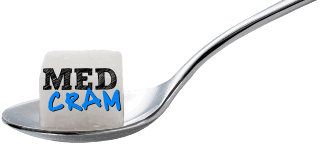COVID-19 risk factors
In this video from Medcram, Dr. Seheult discusses a study on a survey that had been done in older adults. The study took place in Greece. It collected data from 8121 community dwelling older adults over the age of 65. After factoring for exclusions, there were about 5100 adults remaining. This was an association study as it asked these older adults if they had ever had a COVID-19 infection and what factors affected them. The multi-regression analysis found that the type of residence i.e. urban vs rural had an increased risk in urban settings. Smoking habits and BMI status, worse sleep quality also increased the risk. It noted that a lack of exercise, stress and anxiety can contribute. Also an adherence to a Mediterranean diet appeared to decrease the risk for COVID-19 infection.
Many of the risk factors in this associative study have already been discussed on Medcram in regards to COVID-19. So what are the things that you can do in an early infection to help try and keep things from worsening?
Early COVID-19 treatment interventions
Paxlovid needs to be considered as it’s a treatment that can be used in early COVID-19 infections, especially if you are older and have risks for hospitalization.
Sunlight is extremely important as it provides near infrared radiation that helps with the oxidative stress/inflammatory response in your body. Especially now in the wintertime when there is less sunlight to go around, it is very important that people prioritize this and try to get outside when they can. Our video Light as Medicine can provide more insight into this.
Hydrotherapy can be helpful in early stages. This is used again to mimic a fever response in the body which augments your immune system with interferon. We have a video on hydrotherapy. The advantages to both sunlight and hydrotherapy include that it is relatively free, there are no supply chain issues that can arise, it’s relatively safe, will not have interaction with other medications for the most part and it’s not dependent on variants.
NAC in 600 mg twice a day as it worked in a research article on influenza and lots of research is suggesting its benefit. The risk vs benefit of taking NAC is low.
Zinc has been shown to be beneficial in use with common colds. It is important not to take too much as it can reduce your copper levels. It is recommended to stay below 40 mg daily.
The next thing is taking vitamin D3. It is important to have your vitamin D levels to make sure it is ok to supplement. The problem with these medications however is that they do rely on a supply chain. When the pandemic hit before in the past, we did not have people to transport these medications. We had supply chain issues in that some of them cannot be manufactured and sold and hence they may not always be reliable and available when needed.
Quercetin is also a zinc ionophore that can be used with relative low risk.
These are a few suggestions on MedCram’s recommendations in early COVID-19 infections. However, if your symptoms are worsening you should always seek medical care earlier rather than later.
LINKS / REFERENCES:
Association of COVID-19 Infection with Sociodemographic, Anthropometric and Lifestyle Factors: A Cross-Sectional Study in an Older Adults’ Population Aged over 65 Years Old (Diseases) | https://www.ncbi.nlm.nih.gov/pmc/arti…
Vegetarian and plant-based diets associated with lower incidence of COVID-19 (BMJ) | https://nutrition.bmj.com/content/ear…
The Case for Sunlight in COVID 19 Patients: Oxidative Stress (MedCram) | • The Case for Sunlight in COVID 19 Pat…
Case Study: Sunlight Treatment for Hospitalized COVID Patient – Outcome and Implications (MedCram) | • Case Study: Sunlight Treatment for Ho…
Interferon’s Role in SARS-CoV2 Infection and the Role of Hydrotherapy (MedCram) | • Interferon’s Role in SARS-CoV2 Infect…
